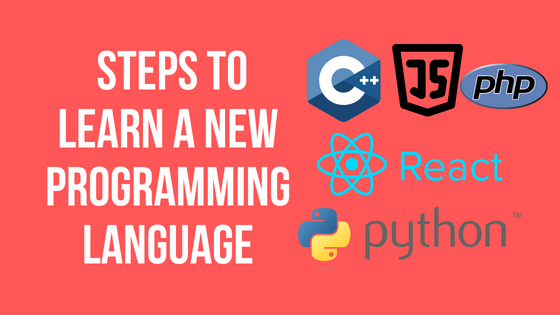New programming languages are popping up all the time. Whether you’re a seasoned developer or just starting out, it can be tough to keep up. But learning a new programming language can open up new opportunities and help you become a better programmer overall. So how do you go about learning a new programming language? In this blog post, we’ll give you five steps to get started. From picking the right language to finding resources and getting started with coding, we’ll cover everything you need to know to start learning a new programming language today.
Choose the right language for you
Assuming you don’t already know a programming language, the first step is to choose which one you want to learn. Different languages are better suited for different tasks. Some languages are more popular than others, so learning a widely-used language can make it easier to find a job as a programmer. Here are some things to consider when choosing a programming language:
– What do you want to use the language for?
– Is the language well-suited to the task?
– Is the language widely-used?
– Are there many resources available for learning the language?
– Do you know anyone who can help you learn the language?
Your choice of programming language should be based on your answers to these questions. If you’re not sure what you want to use the language for, start by looking at some of the most popular languages and seeing what they’re used for. Once you’ve narrowed down your options, research each language in more depth to see if it’s a good fit for your needs.
Find resources to help you learn
When you want to learn a new programming language, it can be overwhelming to try to find resources on your own. But luckily, there are plenty of helpful resources out there if you know where to look. Here are some tips on finding resources to help you learn a new programming language:
1. Check out online resources. A quick Google search will reveal a wealth of online resources for learning almost any programming language. There are websites, forums, and blog articles dedicated to helping people learn new languages, and many of them offer free resources.
2. Look for language-specific resources. In addition to general online resources, there may also be some specific to the language you’re trying to learn. For example, if you’re interested in learning Python, the Python website offers tutorials and other resources specifically for Python learners.
3. Ask experienced programmers for help. If you know someone who is already experienced with the language you’re trying to learn, they can be a great resource for finding good materials and getting advice on how to best learn the language.
4. Invest in a good book or course. While there are plenty of free online resources available, sometimes it’s worth investing in a more comprehensive book or course if you really want to make sure you’re learning everything properly. Do some research to find reputable materials that will help you learn the ins and outs of your chosen language.
Create a study plan
When you are starting to learn a new programming language, the first step is always to create a study plan. This will help you to stay on track and make sure that you are making progress.
The most important part of your study plan should be your goal. What do you want to achieve by learning this new programming language? Once you have your goal in mind, you can start to break it down into smaller goals. These smaller goals will be the steps that you need to take in order to achieve your overall goal.
Your study plan should also include a time frame for each of your goals. This will help you to stay focused and motivated. Make sure that you realistic with your timeframes, as it can be easy to get discouraged if you are not making progress as quickly as you would like.
Finally, don’t forget to include a way to measure your progress. This could be something as simple as keeping a journal or logging the hours that you spend studying. Checking in on your progress regularly will help you to stay on track and ensure that you are making the progress that you want to be making.
Practice, practice, practice
In order to learn a new programming language, it is important to dedicate time to practice. This means setting aside time each day or week to work on coding projects. It is also helpful to find online resources or tutorials specifically for the language you are trying to learn. Dedicating time to practice will help you internalize the syntax and concepts of the new language so that you can become proficient in using it.
Join or create a community
The most important step to take when learning a new programming language is to find or create a supportive community. When you’re starting out, it can be difficult to find experienced developers who are willing to help you learn.
One way to find a community is to join an online forum dedicated to the programming language you’re interested in. You can ask questions and get advice from more experienced developers. There are also many online resources that can help you learn a new programming language.
Another great way to find a community is to attend local meetups or conferences. This is a great way to meet other developers in person and get started learning a new programming language.
Conclusion
Learning a new programming language can be daunting, but it doesn’t have to be. By following these five simple steps, you can quickly and easily learn a new programming language and start putting it to use in your next project. So what are you waiting for? Get started today!



